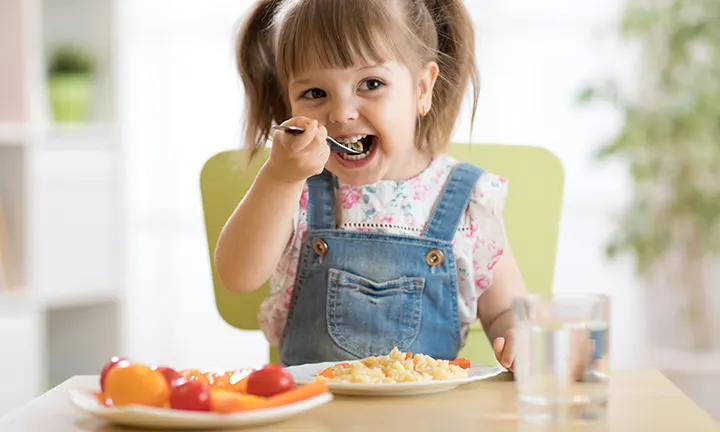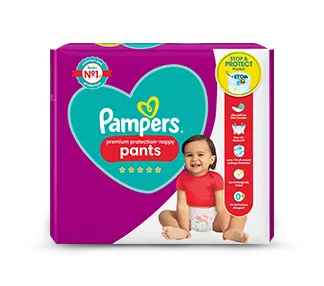30 Easy Toddler Lunch Ideas
Coming up with new meal ideas for your toddler can be daunting, especially if your child is sometimes a fussy eater. Read on for some sure-fire toddler lunch ideas that your little one will love, whether you’re serving them up at home or packing them in a lunch box for later.
30 Healthy Toddler Lunch Ideas
Whether it’s for a quick and easy lunch at home or for a packed lunch for your toddler to take to playgroup or nursery school, you can’t go wrong with these ideas:
Italian pasta salad. Cooked penne tossed with a few drops of olive oil, lemon juice, sliced cherry tomatoes and diced mozzarella cheese.
Egg salad. Hard boiled eggs mashed with mayonnaise and served with toast or strips of pitta or chapati and cucumber sticks. Give apple slices for dessert.
Courgette fritters. Grated courgette mixed with an egg and a spoonful of wholewheat flour, shaped into mini pancakes and pan-fried in a small amount of low-polyunsaturated vegetable oil (such as rapeseed, soya or olive oil). Serve with a yummy dollop of sour cream.
Chicken and apple sauce. Grilled or baked chicken breast fillets with a home-made or shop-bought unsweetened apple sauce and cheddar cubes.
Eggs in purgatory. Eggs poached in canned or fresh tomato sauce with chickpeas and baby spinach, served with bread, toast, pitta or chapati
Waldorf chicken salad. Diced (or shredded, if your toddler is still getting the hang of chewing chunky food) grilled chicken with diced or thinly sliced green apple, wafer-thin celery slices and red or white grapes sliced lengthways (with pips removed). Mix with mayonnaise and serve with pitta or bread
Fish cakes. These fishy treats can be a great way of using up leftover mashed potato. If you haven’t got any, just boil and mash a few spuds then cool and mix with some milk-poached (cooled) fish fillets like cod or salmon. To be safe, mash the fish up thoroughly and check carefully for any small bones. Optionally, add a little grated, full-fat cheddar and sweetcorn for extra flavour. Gently roll the cakes in some beaten egg and/or flour, then grill or fry after chilling in the fridge.
Cold lunch platter. Hard boiled eggs with cucumber sticks and a cream cheese or yoghurt dip, with fresh blueberries for dessert.
Black bean guacamole. Canned black beans mixed with diced avocado, grated cheese, diced tomato and chopped chives.
Peanut butter and banana slice. A slice of bread spread with smooth peanut butter overlaid with banana slices, served with a peeled, seedless mandarin orange or clementine for dessert.
Cream cheese bagel with tomato. Mini bagel spread with cream cheese and topped with sliced tomatoes.
Mexican pizza. Brown rice cake spread with guacamole and topped with grated cheese and diced tomato.
Mini sloppy joe. Minced beef (or textured vegetable protein) cooked with finely chopped vegetables (onion, tomato, carrot and celery), spooned onto a lightly toasted wholewheat bread roll and topped with grated cheddar.
Ham and cheese wrap. Soft tortilla wrap lined with sliced ham, sliced cheese and romaine lettuce, rolled up and cut into four pieces.
Hummus and veggies. Home-made or shop-bought hummus with strips of wholewheat pitta and cucumber sticks for dipping.
Tuna sandwich. Canned tuna in spring water, drained and mixed with mayonnaise then spread on bread or pitta with baby spinach added on top.
Shepherd’s pie. Make a simple ragout of minced beef or lamb (or a vegetarian alternative) and diced or sliced carrots, sweetcorn and any other vegetables you have handy, topped with a layer of mashed potato and baked in the oven.
Mini omelette. Egg omelette cooked with baby spinach, grated mozzarella, and sliced mushrooms. Serve with a slice of toasted wholemeal bread.
Soft-boiled egg and soldiers. The soft-boiled egg sitting in an eggcup with warm toast ‘soldiers’ to dip into the gooey yolk is a kids’ lunchtime favourite that you might remember fondly from your own childhood. Only use eggs stamped with the Red Lion mark when making soft-boiled eggs for your toddler.
Savoury muffin. Oat flour muffin with chopped carrots and broccoli mixed into the batter before baking, served with cream cheese.
Macaroni and peas. Cooked macaroni with cooked peas and cooked diced sweet potato.
Pasta carbonara. Cook up your toddler’s favourite type of pasta, drain it and put it back in the saucepan. Whisk together some cream, an egg yolk or two, some chunks of ham and a little grated parmesan cheese. Pour the mixture over the pasta, stir together and heat until cooked through. Serve with a sprinkling of fresh parmesan.
Chicken peperonata. Dice chicken breast and slice peppers in different colours, then sauté in a little olive oil and serve over pasta or rice.
Tortilla ‘pizzas’. Top some corn tortillas with grated cheese, diced tomatoes, and chopped peppers. Bake in the oven until the cheese melts – allow to cool to a safe temperature before serving.
Cottage cheese with fruit. Serve a bowl of cottage cheese with diced apple, pear, plums, apricot, peach, or grapes – all with the seeds removed. You could also mix a few fruits together and serve the cottage cheese with a seasonal fruit salad.
Tropical chicken and rice. Diced grilled chicken with jasmine coconut rice topped with finely diced mango, kiwi and red pepper.
Dipping plate. Chicken fingers and breadsticks served with a variety of dips – for example avocado, mild mustard or sour cream. Serve a dessert of sliced strawberries with yogurt for dipping.
Buttered twisty pasta. Corkscrew (fusilli) pasta with melted butter and grated parmesan. Add some veggies and shredded chicken.
Buddha bowl. Quinoa with steamed soya beans (edamame), cubed and roasted butternut squash and diced red pepper.
Mini pizza. Mini wholewheat pizza base (or a pitta or a savoury muffin split in half) spread with pizza sauce and shredded mozzarella, baked until the cheese melts. Make this meal even more fun by letting your toddler choose some extra toppings and arrange them on top of the mini pizzas before baking. Let your toddler choose from a range of healthy vegetable and meat toppings.
Nutritional Balance and Variety in Your Toddler’s Lunches
When planning your toddler’s lunches and other meals, aim to include a variety of nutritious foods from the main food groups, which include:
Fruit and vegetables
Starchy foods like bread, rice, pasta and potatoes
Protein foods, such as meat, pulses, fish and eggs
Dairy, such as milk, cheese and yoghurt (or alternatives)
Fibre. Fibre is important in a healthy balanced diet, but some high fibre foods (like wholemeal bread, pasta, brown rice and wholegrains) can be so filling they don’t leave enough room for other foods. So, while it’s great to include some foods like this in your child’s diet, experts advise against feeding your toddler exclusively with wholegrain and high-fibre foods until after the age of 5 years old.
Don't worry if a particular meal doesn’t happen to include every food group, or if your toddler doesn't eat every type of food you serve.
As long you offer a selection of nutritious meals and healthy snacks with varying colours, tastes and textures, your child's diet will balance out over the course of the day and week.
How Much Food Is Enough?
As a rule of thumb, over the age of 1 year old, your toddler needs three nutritious meals a day and one or two healthy snacks.
The amount a toddler eats varies from meal to meal and day to day, so there’s no ‘correct’ amount to feed your child at every sitting. To avoid giving oversized portions, the best advice is to start out giving your toddler small portions and let him or her know that it’s OK to ask for more if needed once the plate’s empty.
It’s also a good idea to serve your toddler’s meals on a child-sized plates, as using adult-sized crockery can encourage your child to overeat.
As a general rule, if your child is active and growing, chances are he or she is eating enough. Children this age are quite good at making sure they get what they need and don’t overeat.
If you’re concerned about your toddler’s eating habits and/or growth, talk to your health visitor, who will be tracking your child’s progress and development and can offer personalised advice.
How to Deal With a Fussy Toddler
Sometimes mealtime can feel like a tug-of-war when your toddler doesn’t seem to want to eat anything or refuses to taste new foods.
There will be times like these, but this doesn’t mean your toddler won’t eat a balanced diet ever again. Fussy eating is just a normal phase that happens in toddlerhood.
If it happens, don’t push the subject of eating, or try to force any particular food, because it may make things worse. Instead, continue to offer different types of foods and let your child pick what appeals to him or her.
If a new food is rejected, don’t make a fuss. Just take it away and try again in a few days or weeks. It may take several attempts before your toddler feels like trying a particular new food.
Avoid Food Bribes
It’s best to avoid using ‘food bribery’ during mealtimes, like promising a reward such as sweets or a pudding in return for eating a savoury main course.
These tactics can lead to future eating problems by sending out a message that sweets are nice, but vegetables are ‘yucky’.
Making mealtime a casual, relaxed, social time is the best way to help your child pick up good eating habits and acquire a healthy attitude toward food and nutrition.
In Summary Help your toddler or older kid have a healthy, balanced diet by |
FAQs at a Glance
A typical lunchtime meal for your toddler with a mix of the main food groups might include:
• Egg, bean and pasta salad. The egg is packed with protein, the starchy pasta has plenty of carbohydrates and the beans add protein and fibre too
• Apple slices for dessert will count towards your toddler’s 5 servings a day of fruit and veg
• Wash it down with a glass of milk to cover some of your little one’s recommended dairy/calcium intake.
The Bottom Line
Planning healthy and nutritious dishes for your toddler’s lunch and other meals can be relatively simple, and even fun. There may be times when your toddler doesn’t want to eat anything or only wants to eat one type of food, but that’s just a normal part of toddlerhood.
Eventually, even fussy toddlers will become more adventurous eaters if you keep offering a variety of tasty foods. Don’t underestimate how much of a role model you can be! If your child sees you eating a variety of tasty and healthy foods he or she will be more likely to mimic you in time.
Remember, preparing your toddler’s lunch doesn’t have to mean twice the cooking. The rest of your family might enjoy the ideas on our list too, making it easy to get everyone’s meals ready in one go.
The information in this article is based on the expert advice found in trusted medical and government sources, such as the National Health Service (NHS). You can find a full list of sources used for this article below. The content on this page should not replace professional medical advice. Always consult medical professionals for full diagnosis and treatment.

